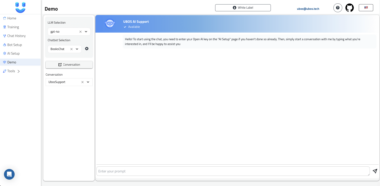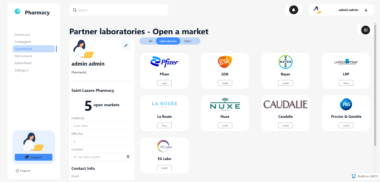Frequently Asked Questions about Roo Code Memory Bank MCP Server
Q: What is the Roo Code Memory Bank MCP Server?
A: The Roo Code Memory Bank MCP Server is a tool that allows AI agents to maintain project context across multiple sessions by interacting with a file-based memory bank using structured MCP tools. It provides a persistent memory for AI agents, enabling them to make more informed decisions and improve overall performance.
Q: What is MCP?
A: MCP stands for Model Context Protocol. It is an open protocol that standardizes how applications provide context to LLMs. An MCP server acts as a bridge, allowing AI models to access and interact with external data sources and tools.
Q: What are the key features of the Roo Code Memory Bank MCP Server?
A: The key features include:
* initialize_memory_bank: Creates the memory bank directory and standard .md files.
* check_memory_bank_status: Checks if the memory bank directory exists and lists the files within it.
* read_memory_bank_file: Reads the content of a specified memory bank file.
* append_memory_bank_entry: Appends a new, timestamped entry to a specified file.
Q: What are the prerequisites for using the Roo Code Memory Bank MCP Server?
A: The prerequisites are Node.js (v18 or later recommended), npm, and an MCP client environment capable of managing and launching MCP servers.
Q: How do I install the Roo Code Memory Bank MCP Server?
A: To install the server, clone the repository, install dependencies using npm install, and build the project using npm run build.
Q: How do I configure the server for use with Cline (or another MCP Client)?
A: Add the server configuration to your MCP settings file, specifying the command, arguments (including the path to the compiled index.js file), and any necessary environment variables.
Q: How do AI agents interact with the server?
A: AI agents interact with the server using the defined tools. The typical workflow involves checking the memory bank status, initializing if needed, reading relevant files to gain context, and appending entries as decisions are made or progress occurs.
Q: Where is the memory-bank/ directory created?
A: The memory-bank/ directory is created in the same directory where the server process is started, which should be the root of the project directory when launched via the MCP client configuration.
Q: How does this server integrate with the UBOS platform?
A: The Roo Code Memory Bank MCP Server seamlessly integrates with the UBOS AI Agent Development Platform, providing a comprehensive solution for building and deploying AI agents with persistent project context. UBOS provides centralized agent management, data integration, customizable agent development, multi-agent orchestration, and enhanced security and compliance.
Q: What are some use cases for this server?
A: Some use cases include software development, content creation, customer support, data analysis, and business process automation. The server allows AI agents to remember project details, past interactions, and relevant information, leading to more efficient and effective outcomes.
Q: How can I optimize AI agent performance with this server?
A: By leveraging the Roo Code Memory Bank MCP Server, businesses can enhance the performance of their AI agents. The persistent project context enables agents to make more informed decisions, adapt to changing circumstances, and learn from past experiences.
Roo Code Memory Bank MCP Server
Project Details
- IncomeStreamSurfer/roo-code-memory-bank-mcp-server
- Apache License 2.0
- Last Updated: 5/1/2025
Recomended MCP Servers



Library docs MCP server
Official Vectorize MCP Server

Connecting Local AI Agent with MCP servers about Crypto and Stock news
The Ultimate Model Context Protocol (MCP) Server, providing unified access to a wide variety of useful and powerful...

Use shell scripts as MCP tools
This read-only MCP Server allows you to connect to CockroachDB data from Claude Desktop through CData JDBC Drivers....
An MCP (Model Context Protocol) server for interacting with a Paperless-NGX API server. This server provides tools for...

MCP Server for running Postman Collections with Newman

mcp server for sns
 From vibe coding to vibe deployment. UBOS MCP turns ideas into infra with one message.
From vibe coding to vibe deployment. UBOS MCP turns ideas into infra with one message.






